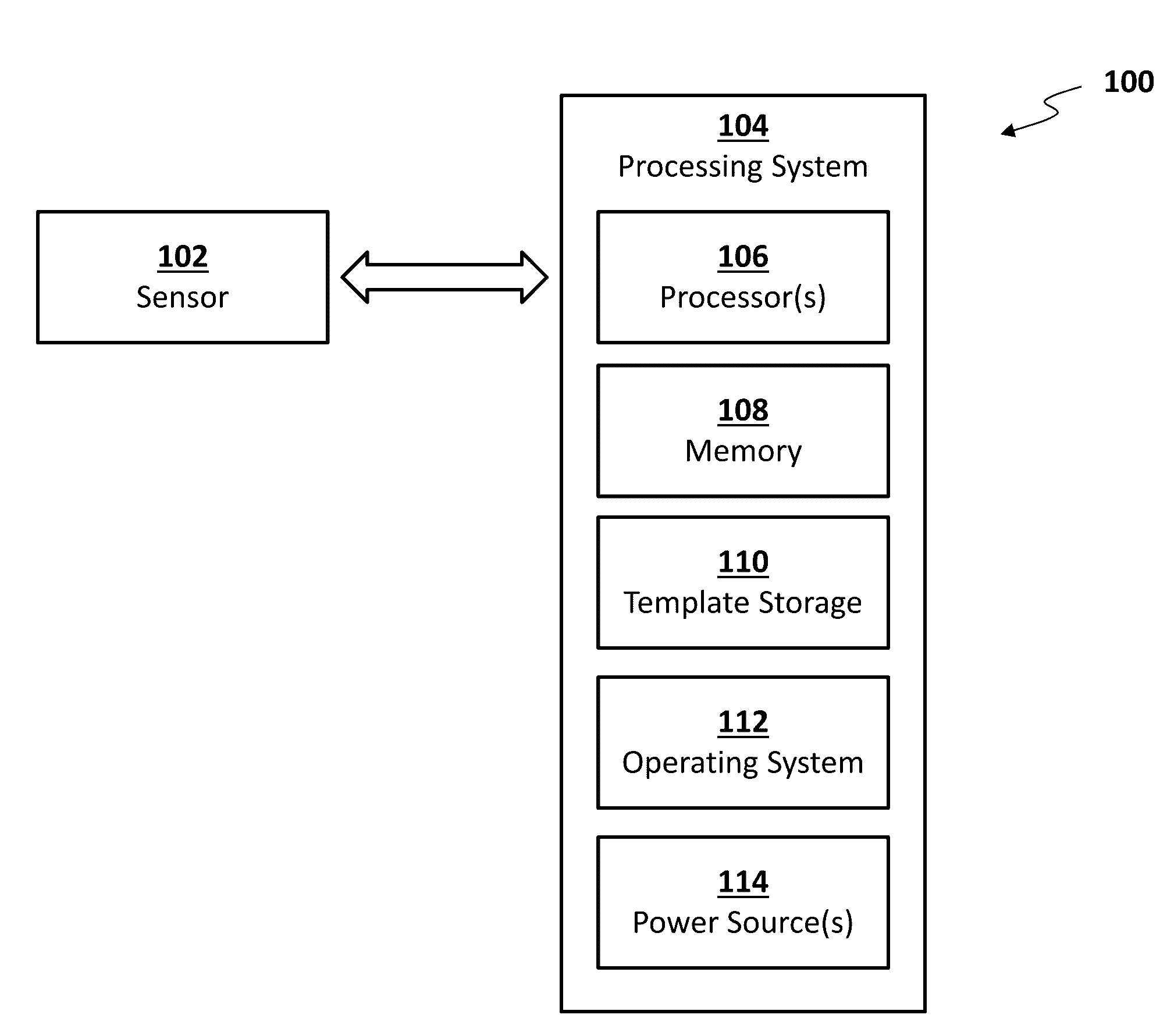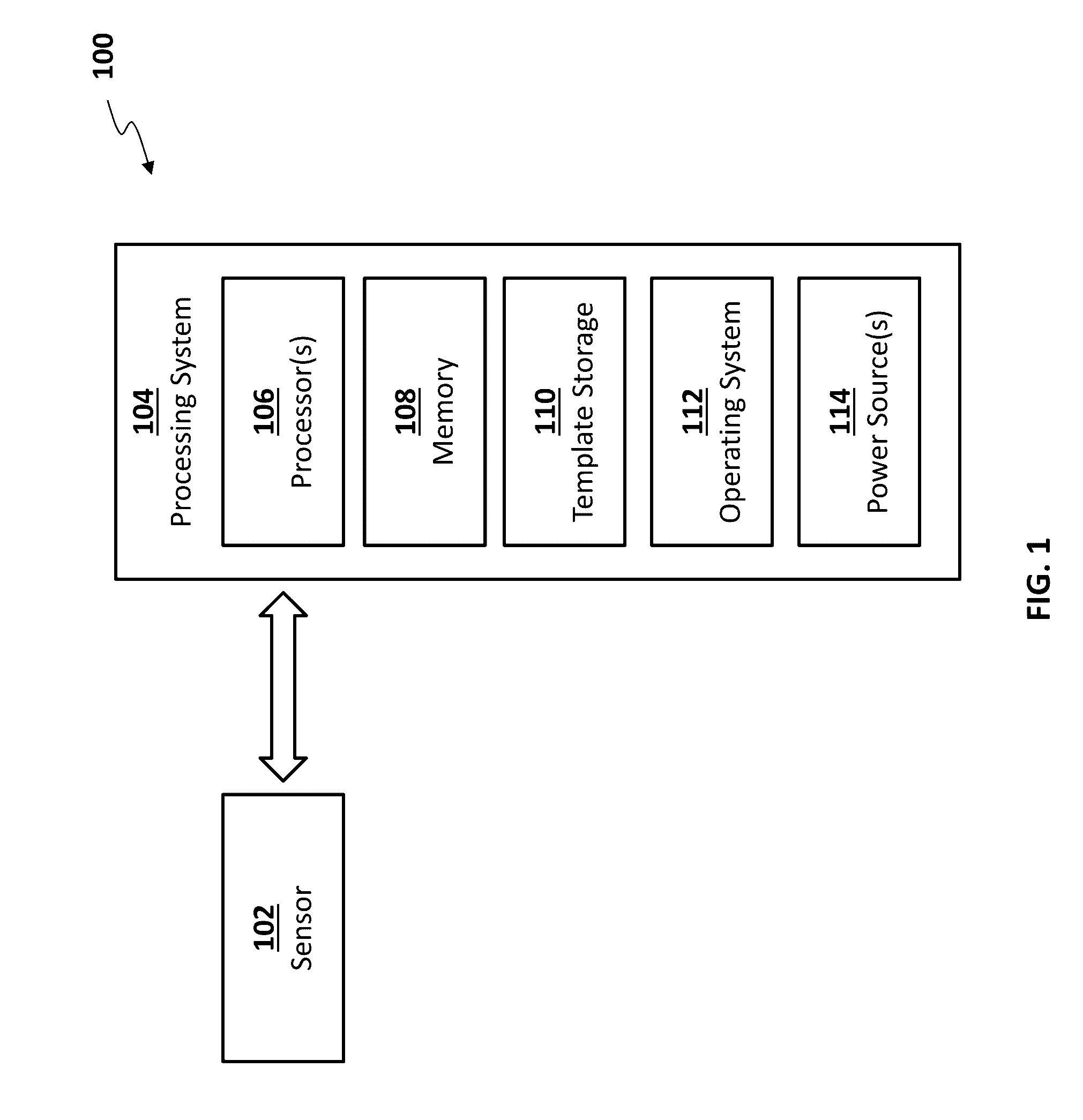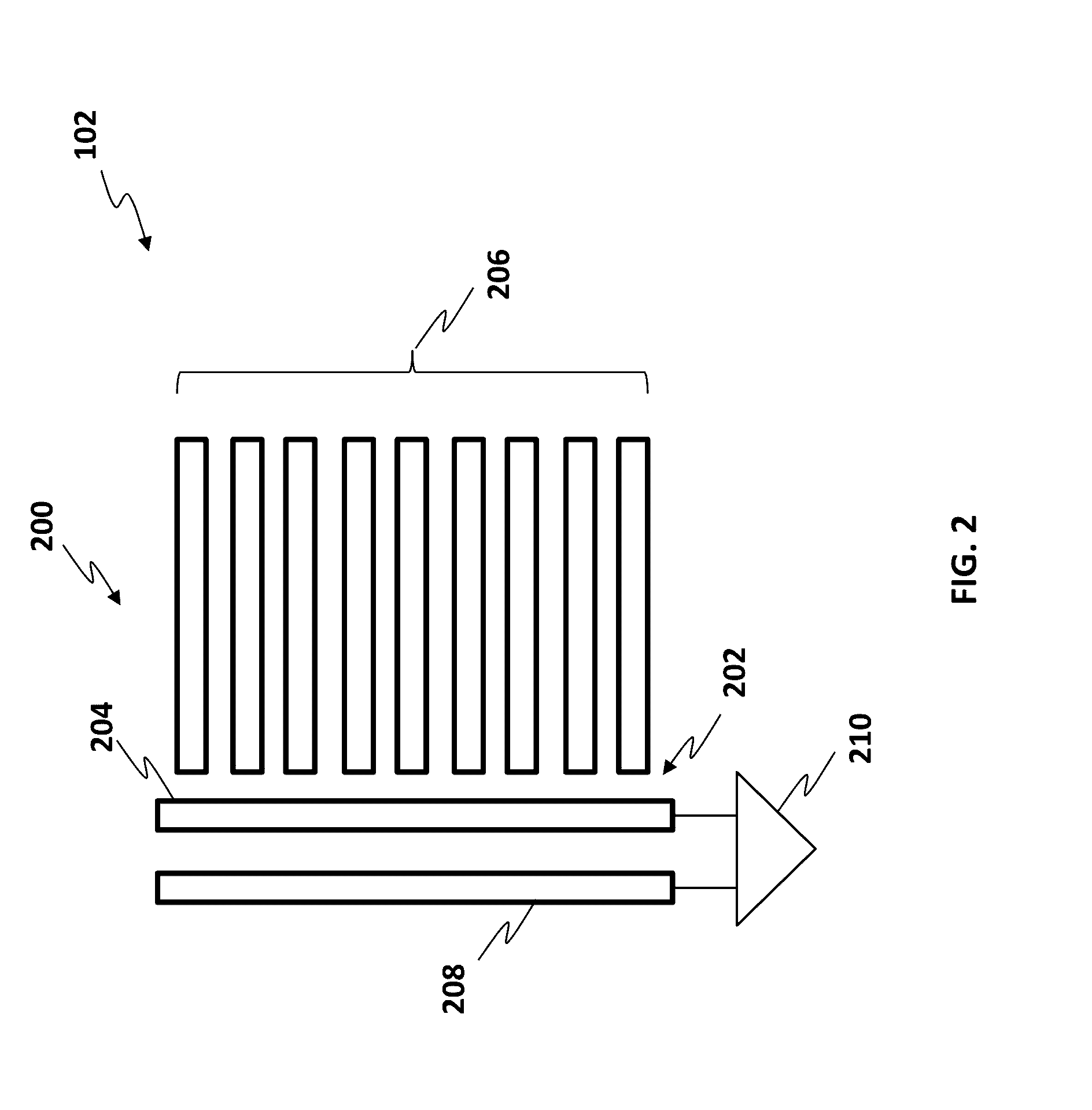Finger detection with auto-baseline tracking
a fingerprint and auto-baseline technology, applied in the field of electronic sensing, can solve problems such as unnecessarily consuming power
- Summary
- Abstract
- Description
- Claims
- Application Information
AI Technical Summary
Benefits of technology
Problems solved by technology
Method used
Image
Examples
Embodiment Construction
[0024]The following detailed description is merely exemplary in nature and is not intended to limit the invention or the application and uses of the invention. Furthermore, there is no intention to be bound by any expressed or implied theory presented in the preceding technical field, background, brief summary or the following detailed description.
[0025]One way to detect presence of a finger or other input object is to use one or more dedicated presence sensing elements on the input device. For example, in a fingerprint sensor, finger presence sensing electrodes may be used in addition to the electrodes of a sensing array that are used to capture an image of a fingerprint in a sensing region of the input device.
[0026]Another way to detect presence of a finger or other input object is to re-use selected sensor electrodes of the sensor array as presence sensing electrodes for presence detection. This embodiment may allow space to be saved by avoiding a need for dedicated presence sens...
PUM
 Login to View More
Login to View More Abstract
Description
Claims
Application Information
 Login to View More
Login to View More - R&D
- Intellectual Property
- Life Sciences
- Materials
- Tech Scout
- Unparalleled Data Quality
- Higher Quality Content
- 60% Fewer Hallucinations
Browse by: Latest US Patents, China's latest patents, Technical Efficacy Thesaurus, Application Domain, Technology Topic, Popular Technical Reports.
© 2025 PatSnap. All rights reserved.Legal|Privacy policy|Modern Slavery Act Transparency Statement|Sitemap|About US| Contact US: help@patsnap.com



